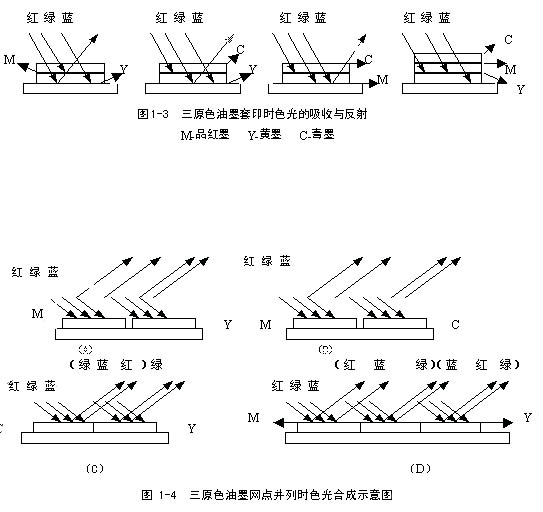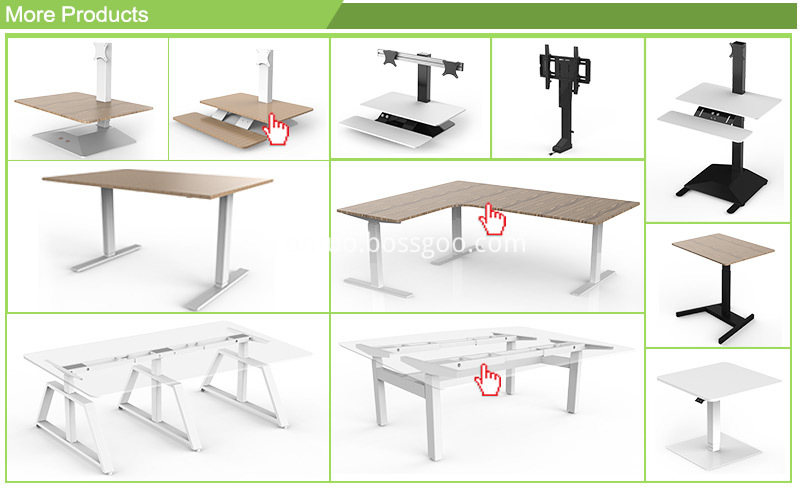The color of an ink on paper
After the ink is printed on the substrate, such as paper, its color is reflected by the reflection and transmission of light, which is represented by the subtractive method of the color material. When the ink is transparent, a portion of the light irradiated thereon is selectively absorbed, and the other portion is transmitted in the past, and the white paper is reflected and reflected back, thereby expressing the color of the ink. When the ink is not transparent, the part of the light that is irradiated to the upper part is absorbed and the non-absorbed part is reflected, showing the color of the ink. The actual ink is translucent and its color is the composite color of these two reflections. The ink color of the dot prints has the following three conditions:
1) Overlap of ink dots
When white light is irradiated onto two types of overlapping transparent inks (as shown in Figure 1), as with the two filters, the light is reflected by the selectivity of the two layers of ink and reflected back, showing the color of the ink. As shown in the first picture on the left, red, green, and blue light (white light) are transmitted through the magenta ink, the green light is absorbed, and the rest of the red and blue light is absorbed by the yellow ink. Finally, the red is not absorbed. The light reflects, that is, the magenta ink and the yellow ink appear as red after overlapping. Similarly, green ink and yellow ink appear as green after overlapping, and magenta ink and blue ink appear as blue after overlapping. If the three primary colors overlap, the light is absorbed and appears black. The ink color in this case is affected by the following conditions:
a: transparency of the ink
b: ink concentration
c: thickness of the ink layer
d: order of overprint
e: Paper's choice of light absorption, reflection ability, etc.
2) The juxtaposition of ink dots
In the three primary color dots of the ink, regardless of whether the ink is transparent or opaque, two kinds of dots are juxtaposed, and their colors are synthesized by the additive color of the colored light (see FIG. 2 ). When the two different network points have less than one point of view to the human eye, the human eye cannot distinguish them and consider it as one point. Parallel ink network is to use this principle to achieve color light additive. As shown in Figure A, red, green, and blue light (white light) are selected to absorb red and blue light (ie, magenta light) after being absorbed by the magenta dots. Similarly to the yellow dot that is juxtaposed with it, red, green light (ie, yellow light) is reflected. ) These reflected lights appear red after being color-added. Similarly, the magenta and blue dot lists are now in blue; the green and yellow dots are listed in green; the tricolor dots are listed in white.
The ink color in this case is affected by the following:
a: Reflection and transmission properties of the ink.
b: Comparison of network size and size. The dot size is the same and the larger the color is dark, otherwise the color is bright; the dot size is different from the larger dot.
c: Paper's choice of light absorption, reflection ability, etc.
3) Juxtaposition of overlapping outlets
The juxtaposition of overlapped outlets is a composite of the above-mentioned case 1 and 2, which is a true reflection of the actual color formation of printed products, and is also an important reason for the rich color of printed products.

Two ink color features
The three characteristics of ink color are color features other than black and white, ie, Hue, Lightness, and Saturation. The three values ​​determine the color of the ink.
1) Hue hue is the most basic feature that distinguishes each color from each other. It is expressed by the main wavelength of the color or the main wavelength of the complementary color. If the main wavelength or the complementary wavelength is different, the color is also different. Thus, various colors (red, yellow, blue, green, etc.) are strictly distinguished by wavelength. The hue of the ink color depends on the spectral composition of the light source and its selective absorption of light.
2) Brightness Brightness is a measure of how much light is emitted by a colored body, that is, how bright it is. It contains two kinds of meanings: First, the color itself is the stimulus intensity to the human eye, in red orange yellow green blue violet, yellow is the brightest, violet is the darkest, and the other is between the two. The second is how much the color body reflects or transmits light, and the more reflected or transmitted, the greater the lightness of the color. The brightness of the ink is also indicative of how much light is reflected or transmitted. The more the brightness of the ink is, the clearer the ink is. It is related to the spectral composition and brightness of the light source and the selective absorption of the ink.
3) Saturation, also called purity, is the purity of color in the same shade. It depends on the degree of selective absorption of the reflected or transmitted color light. The object has a relatively high reflectivity to a narrow band of color light, and a low or no reflectance to other bands, the object has a high spectral selectivity, and the color saturation of such an object is high. The saturation of ink color is very important for printing in printing, depending on its spectral selectivity and the nature of the light source.
Three ink color representation
In addition to the hue, brightness, and saturation, the color of the ink can be expressed in the international color representation as follows:
1) Standard color CIE
a:2 blink field CIE1931 tristimulus values ​​X, Y, Z or chromaticity coordinates x, y
b:10 ゚ Field of view CIE1964 tristimulus values ​​X, Y, Z or chromaticity coordinates x, y
c: CIE L*a*b* or CIE Lab
d: CIE1976 (L*u*v*) or CIE1976 (L*a*b*)
2) Calculation of color difference
⊿E=[(⊿L*)2 + (⊿μ*)2 + (⊿v*)2]1/2 or ⊿E=[(⊿L*)2 + (⊿a*)2 +(⊿b *)2]1/2
3-stage Lifting Column
Electric 3-stage Lifting Column the speed is 35mm/S,more faster more than 2-stage Lifting Column .Can be used on many desk ,like Single Motor Standing Desk, One Leg Standing Desk , Two Legs Standing Desk ,Three Legs Standing Desk,Four Legs Standing Desk. TV Lift / Cart .

3-Stage Lifting Column,3 Stages Metal Lifting Column,Electric Lift Column,Electric Lift Table Columns
Shaoxing contuo Transmission Technology Co.,Ltd , https://www.contuo-desk.com